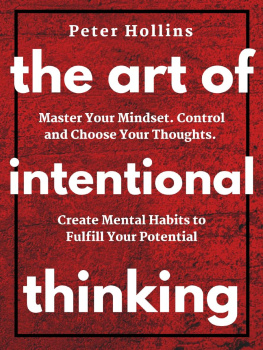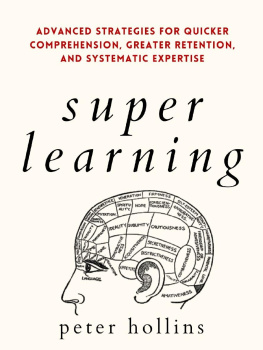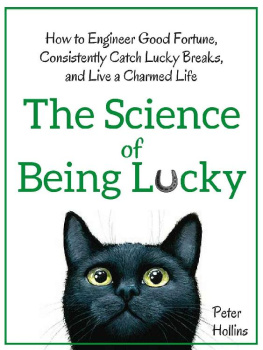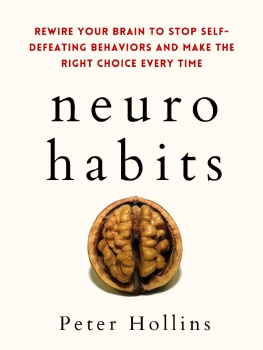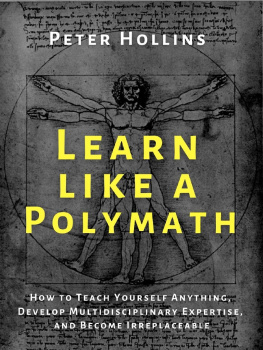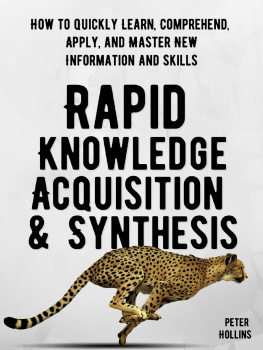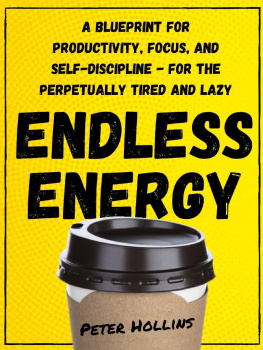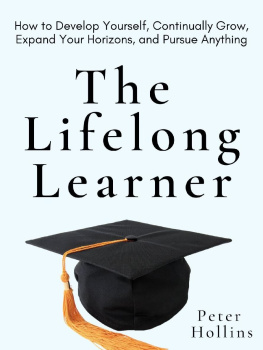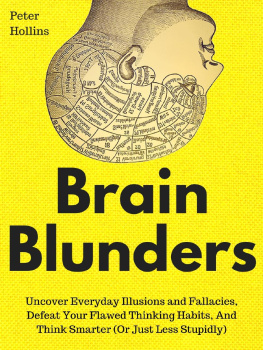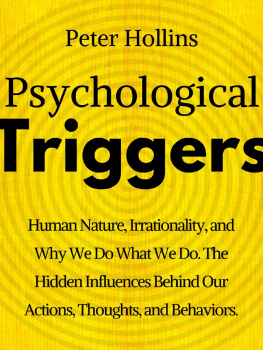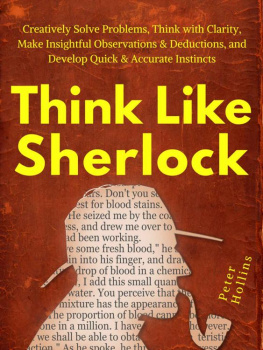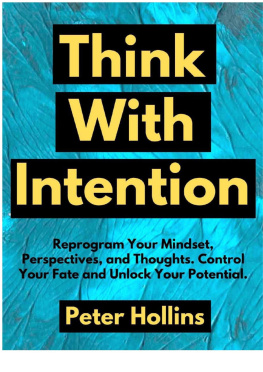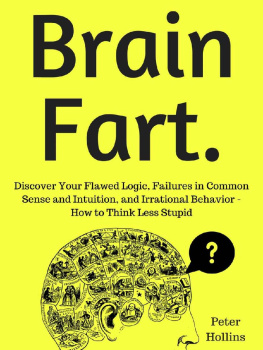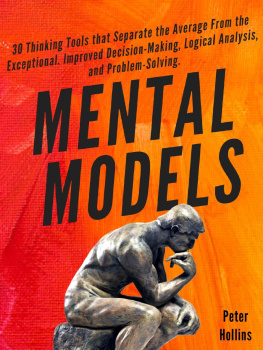Peter Hollins - The Art of Intentional Thinking (Second Edition)
Here you can read online Peter Hollins - The Art of Intentional Thinking (Second Edition) full text of the book (entire story) in english for free. Download pdf and epub, get meaning, cover and reviews about this ebook. genre: Religion. Description of the work, (preface) as well as reviews are available. Best literature library LitArk.com created for fans of good reading and offers a wide selection of genres:
Romance novel
Science fiction
Adventure
Detective
Science
History
Home and family
Prose
Art
Politics
Computer
Non-fiction
Religion
Business
Children
Humor
Choose a favorite category and find really read worthwhile books. Enjoy immersion in the world of imagination, feel the emotions of the characters or learn something new for yourself, make an fascinating discovery.
- Book:The Art of Intentional Thinking (Second Edition)
- Author:
- Genre:
- Rating:4 / 5
- Favourites:Add to favourites
- Your mark:
- 80
- 1
- 2
- 3
- 4
- 5
The Art of Intentional Thinking (Second Edition): summary, description and annotation
We offer to read an annotation, description, summary or preface (depends on what the author of the book "The Art of Intentional Thinking (Second Edition)" wrote himself). If you haven't found the necessary information about the book — write in the comments, we will try to find it.
Peter Hollins: author's other books
Who wrote The Art of Intentional Thinking (Second Edition)? Find out the surname, the name of the author of the book and a list of all author's works by series.
The Art of Intentional Thinking (Second Edition) — read online for free the complete book (whole text) full work
Below is the text of the book, divided by pages. System saving the place of the last page read, allows you to conveniently read the book "The Art of Intentional Thinking (Second Edition)" online for free, without having to search again every time where you left off. Put a bookmark, and you can go to the page where you finished reading at any time.
Font size:
Interval:
Bookmark:
Master Your Mindset. Control and Choose Your Thoughts. Create Mental Habits to Fulfill Your Potential.
By Peter Hollins,
Author and Researcher at petehollins.com
Click for your FREE Human Nature Cheat Sheet: 7 Surprising Psychology Studies That Will Change The Way You Think .
The Inner Voice
Self-Fulfilling Prophecies
The Power of Thoughts
Fixed vs. Growth Mindset
Adjust Your Locus of Control
Self-Efficacy vs. Helplessness
Turn the Obstacle Upside Down
A Long-Term View
The 40% Rule
Thinking vs. Doing
Solution vs. Problem Mindset
From Motivation to Action
Think Big
Systems vs. Goals
The Alter Ego
Create Perspective
Positivity and Optimism
The Beginners Mindset
I Know It All vs. What Dont I Know?
The Echo Chamber
Youre Never There: Perpetual Progress vs. Achievement
Moving Beyond the Past
Accepting an Uncertain Future
How to Live in the Present
Courage versus fear. Comfort versus worry. Faith versus doubt. Confidence versus uncertainty.
These are battles fought every daybattles of mindset. And the arena in which they fight is contained within our brains. Whichever set of thoughts you allow to win will rule the day and your actions, and that is not a positive experience when disempowering thoughts win.
Indeed, for a few of us, the battles are one-sided. People who experience nearly constant success (or think they do) may be more able to disregard the negative or naysaying sides in the clash. Others who face mounting, daily struggles through an extended amount of time dont trust the positive voices.
We may perceive our mindsets as things we cant change or affect. We envision them as products of an external environment, circumstances, or history that are far bigger factors than we can proactively transform. The truth is that you have great capacity to modify your mindset. Goals and accomplishments that might seem impossible in an entrenched mindset can be attained much more practically than you may realize, just by reorganizing your way of thinking.
Is it easy to change your mindset? Of course it is! Except when it isnt.
Changing ones mindset is easy because theres no heavy lifting or manual effort. Its not a physical procedure that requires too much exertion. You could be doing it while sitting on a couch without anyone knowingall you have to do is think something into existence and it becomes true. If you were to ask someone if theyd rather think different thoughts or work in a coal mine for 10 hours, its not going to be a close decision.
But the ability to think a certain way on a consistent basis involves self-discipline and focus to the highest degree; changing a mindset is hard and can be frustrating because your effort wont directly translate into a different type of thought. You can always hit the gym harder, but thinking harder doesnt necessarily do anything. There is really no correlation between an input and an output.
Changing your mindset is especially tough if it involves countering what youve been taught all your life. A complete rewiring of your thoughts and mindsets is daunting at best but imperative to creating a life you feel happy to wake up to every day.
Like it or not, our mindset is our internal lens to the world around us. Our thoughts, opinions, beliefs, fears, and hopes get projected onto everything we see. We use those inner convictions to interpret everything that happens in the world and to us.
People who have attained the success you desire have all manipulated their mindsets in specific ways. You could argue that other factorseducation, upbringing, luck, timingproduced their great achievements. Its easy to use those as an excuse for your lack of action, but the real-life evidence doesnt tend to support that. Is everyone rich simply lucky and rich to begin with and everyone poor simply lazy and apathetic?
Two children from the same middle-class family, who grew up in the same circumstances, can wind up in wildly different situations. One child with a positive mindset might turn out to be hardworking and wealthy. The other one could be consumed by a jealous mindset and a predisposition to failure and might wind up in a thankless job with low prospects.
The only difference between you and greatly successful people is in the mindset. Its your view of the world, its challenges and rewards, and how you navigate through all of them.
Mindsets can be as varied as any given segment of the population. Here are just a few different mindsets you might possess to varying degrees:
- Productive mindset. Someone who is task-oriented and driven to complete what theyre working onand then move on to the next thing. Theyre a hammer, and everything looks like a nail. They are always in motion.
- Creative mindset. A person with unique abilities and inventive approaches who can solve problems in ways very few others can. They always seek unconventional methods to accomplish the same goal.
- Confident mindset. Someone whos happy with themselves and projects conviction, ability, and leadership. They naturally end up in charge and taking action first. They feel that anything is possible.
- Dreamer mindset. An individual who can see the big picture and is able to inspire others to take a broad and beneficial approach toward the future. They think big picture in lieu of details and procedures.
These mindsets affect and change someones perception of the world. A productive mindset might see what needs to be done in their immediate environment, whereas the dreamer mindset might see its potential in an emotional or altruistic sense.
These are just some of the good mindsets. There are also mindsets for jealousy, anger, fear, greed, and the opposite of all of the mindsets above.
Self-talkthe commentary, criticism, and judgment we tell ourselves about ourselvesis one channel that your mindset tunes into, whether its out loud or to yourself. Just think of it as your internal dialogue that never goes away, for better or worse. It narrates your life, but the perspective it narrates from is completely up to you. You can be your own biggest cheerleader or critic.
Each statement you think or say constructs your inner monument of self-belief, brick by brick. And we probably give a little more credence to negating self-talk since its easier to believe we cant do something if we havent yet tried. Im not smart enough to learn complicated math concepts, Im not physically gifted enough to run a 10-kilometer marathon, Im not attractive enough to have someone interested in me.
Another aspect of your inner voice is the narrative: the never-ending story that you tell over your entire life about who you are and what youre capable of. It explains what happens in your life and why you do certain things that you do. It often addresses themes or recurring events that occur in a lifespan. It usually isnt very accurate, especially if you tend to feel bad about yourself. Self-talk and the narrative have a chicken-and-egg relationship.
For instance, those with a victimized mindset claim that they were the patsies of people despite their best intentions. You claim you were fired from your job because your supervisor didnt care for your personality, but it might have been simply that their budget got a whopping cut and you had to be let go.
This isnt to say that your self-talk and narrative dont contain elements of truth or are completely unfounded. But its important to check them with reality as much as possible. The more you can control your thoughts and inner voice, the more enabled youll feel to make positive changes.
Font size:
Interval:
Bookmark:
Similar books «The Art of Intentional Thinking (Second Edition)»
Look at similar books to The Art of Intentional Thinking (Second Edition). We have selected literature similar in name and meaning in the hope of providing readers with more options to find new, interesting, not yet read works.
Discussion, reviews of the book The Art of Intentional Thinking (Second Edition) and just readers' own opinions. Leave your comments, write what you think about the work, its meaning or the main characters. Specify what exactly you liked and what you didn't like, and why you think so.

